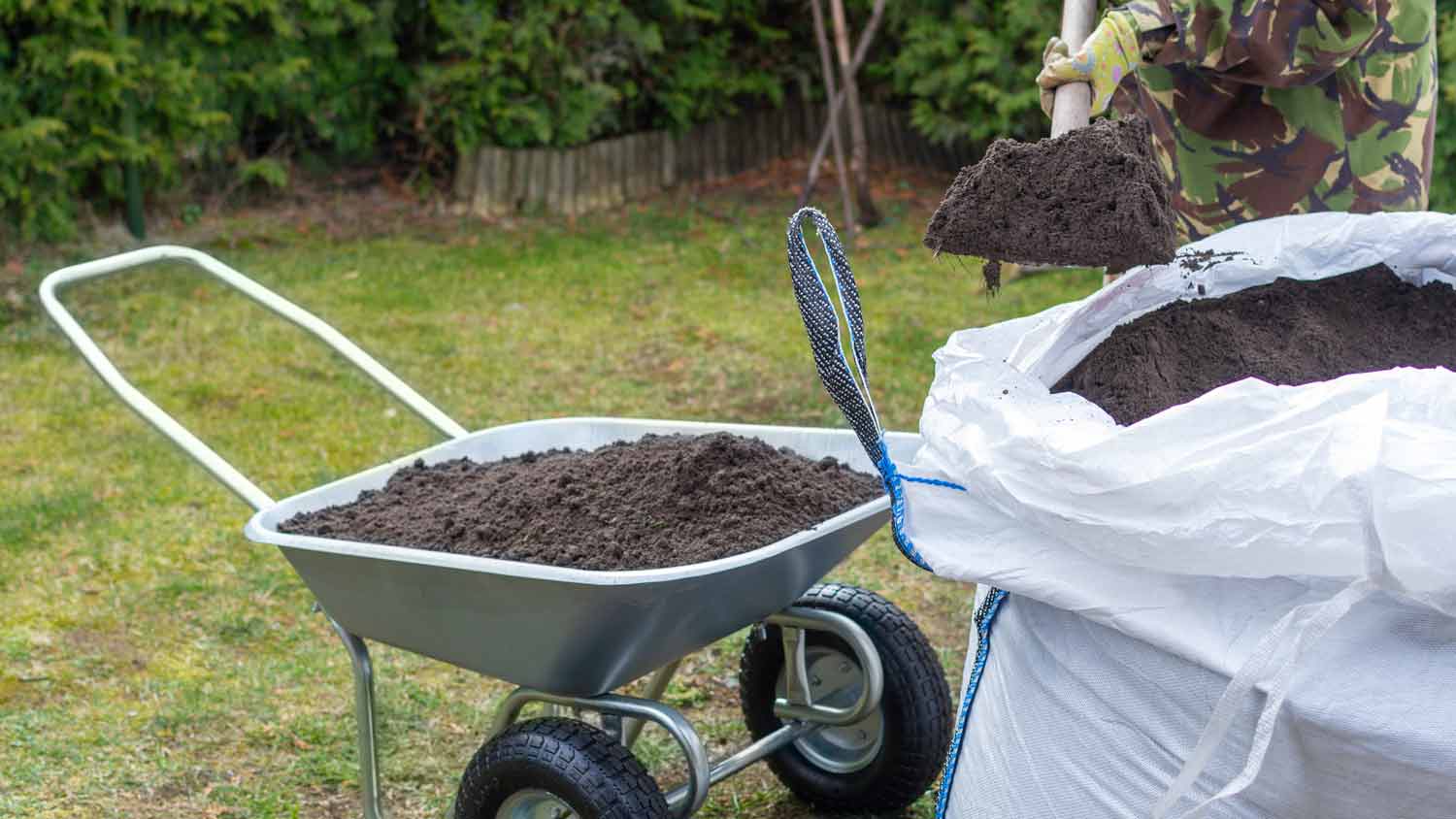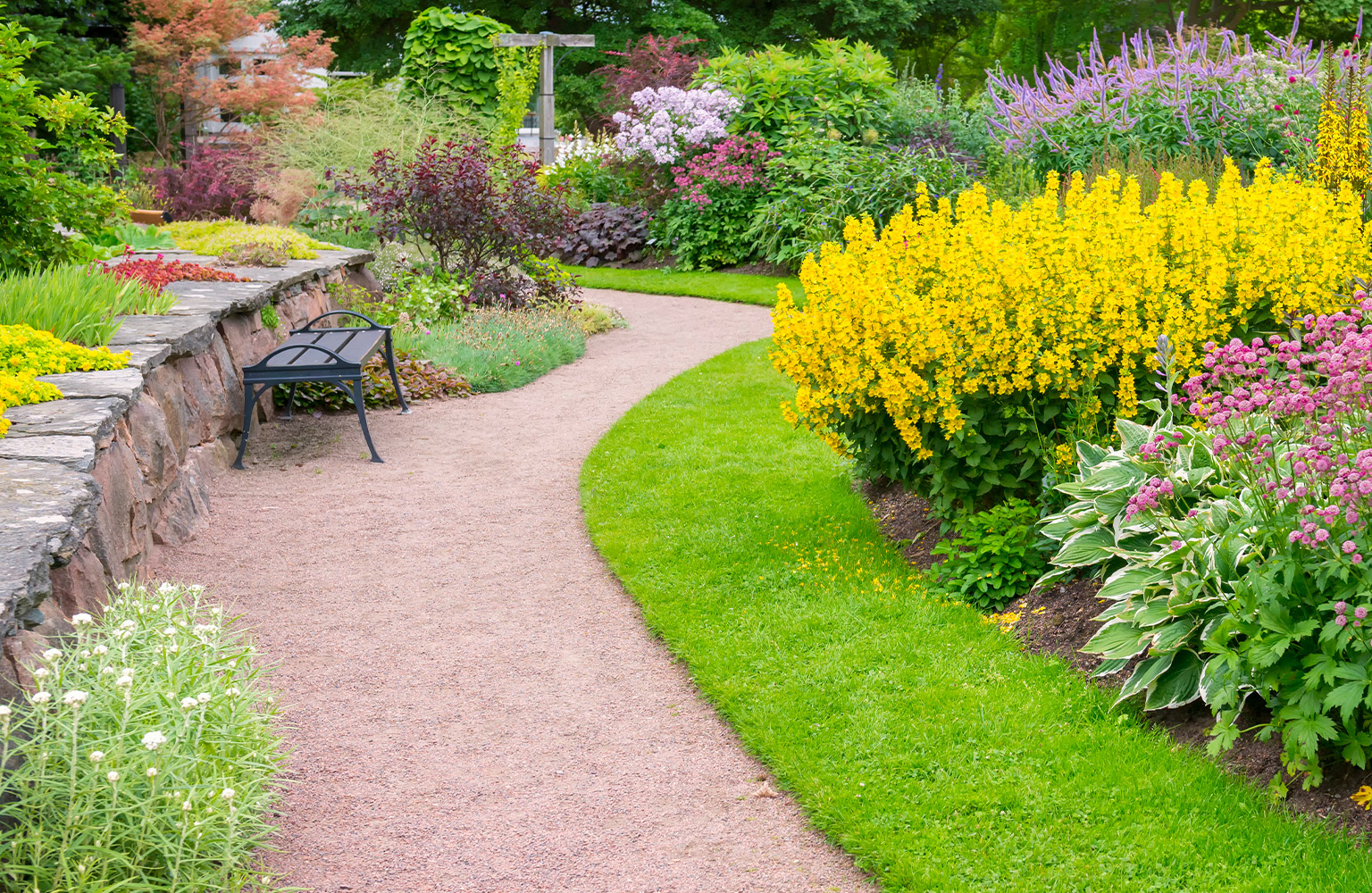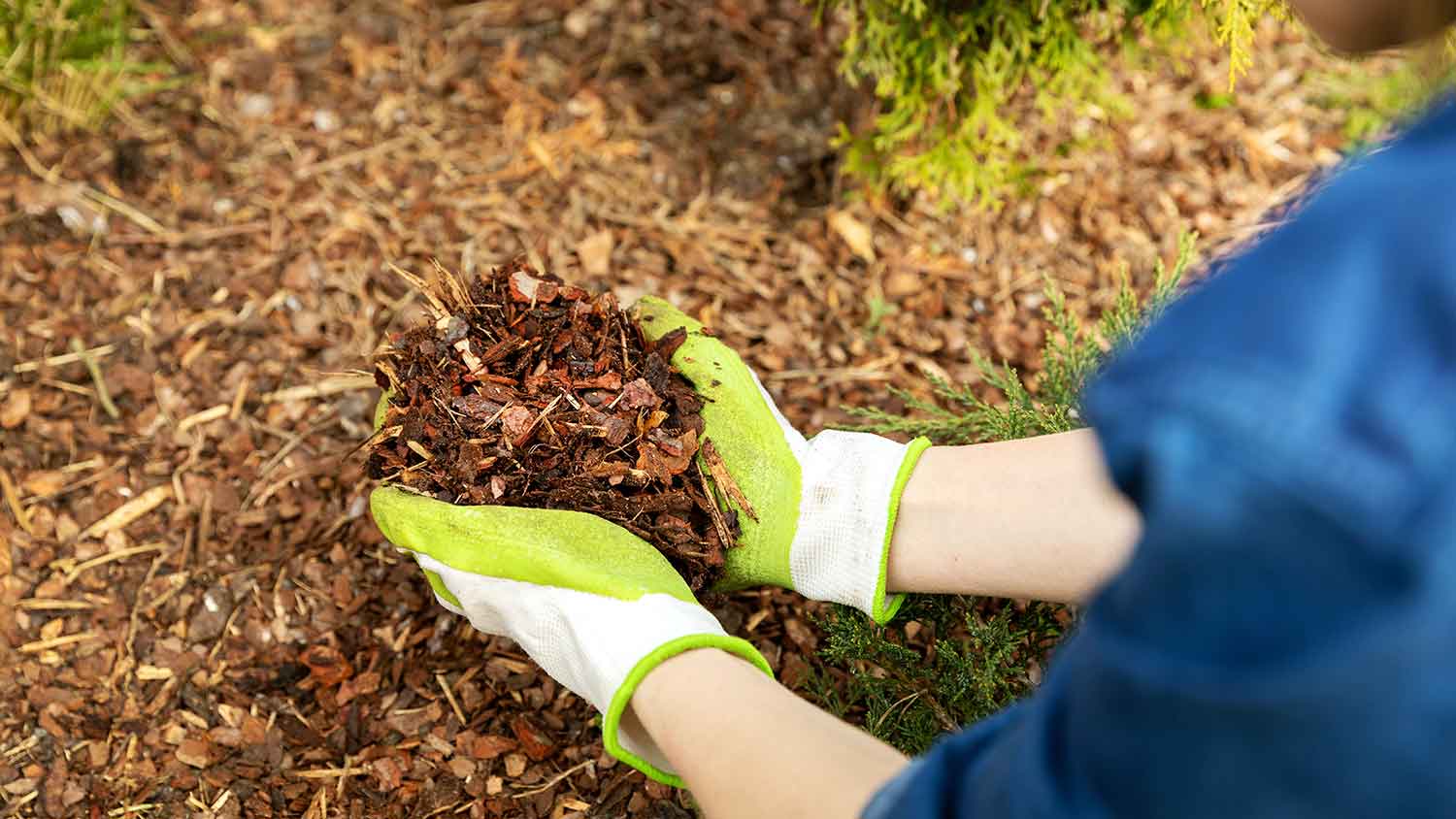
Get clear, up-to-date fill dirt cost info. Learn average prices, cost factors, and tips to save on your next fill dirt project.
Mulch and topsoil service costs depend on your project and location. Check with a local pro for your specific job.
Forestry mulching clears brush, trees, and vegetation by grinding them into mulch with specialized machinery.
The main cost factors include acreage, vegetation density, terrain difficulty, and the type of equipment used.
Investing in forestry mulching can increase land value, improve accessibility, and help prevent wildfires.
Most mulching professionals charge between $150 and $300 per hour or $1,000 to $2,500 per acre.
To save on costs, consider prepping your land yourself or bundling mulching with other land services.
This article was created using automation technology and thoroughly fact-checked and edited by an Angi Editor in accordance with our AI policy.
Forestry mulching costs average $2,000, with most homeowners spending between $1,000 and $4,000 for standard projects. Prices can range from $500 for small, light jobs to $8,000 or more for large, dense acreage. Expect to pay $150 to $300 per hour or $1,000 to $2,500 per acre, depending on site conditions and project size.
This guide explains what influences the cost of forestry mulching, ongoing expenses, and how to choose between DIY and hiring a professional. We’ll also cover add-ons, ways to save, and common questions so you can plan your project with confidence.
Several factors affect the total price of forestry mulching, from the type of service you need to the equipment and labor involved. Let’s break down the main details that determine your project cost.
Forestry mulching services fall into several categories, each with a different impact on price:
Selective mulching targets specific vegetation.
Complete land clearing removes everything in the area.
Brush removal focuses on undergrowth and smaller plants,
Invasive species control targets unwanted or harmful plants.
Each type suits different goals—residential lot clearing, pasture restoration, or trail creation.
Single-pass mulching, where machinery makes one sweep through the area, is less expensive but may leave some material behind. Multi-pass mulching, which involves several rounds, provides a cleaner finish but costs more due to increased time and fuel.
| Type of Forestry Mulching | Description | Average Cost per Acre |
|---|---|---|
| Selective mulching | Removes specific trees or brush, preserves others | $1,200–$2,000 |
| Complete land clearing | Removes all vegetation and trees in the area | $1,500–$2,500 |
| Brush removal | Clears undergrowth, small trees, and shrubs | $1,000–$1,800 |
| Invasive species control | Targets and removes non-native or harmful plants | $1,200–$2,200 |
The size of your project is one of the biggest cost drivers. Most contractors charge per acre or set a minimum fee for smaller jobs. Larger lots often qualify for bulk discounts, reducing the cost per acre as the project size increases.
For example, clearing a half-acre lot may cost more per acre than a five-acre project, due to mobilization and setup costs. Small lots (under one acre) may have minimum service charges, while projects over ten acres often receive custom pricing.
| Project Size (Acres) | Average Cost |
|---|---|
| 0.5 | $1,000–$1,400 |
| 1 | $1,200–$2,500 |
| 5 | $5,000–$10,000 |
| 10+ | $9,000–$20,000 |
Forestry mulching relies on specialized equipment rather than consumable materials. The type of machinery—such as a skid steer with a mulcher attachment, a dedicated forestry mulcher, or a tractor-mounted unit—affects your cost. Dedicated mulchers are more efficient on dense, large tracts but cost more to operate.
Contractors may own their equipment or rent it, and rental costs can be higher for less common machines. Fuel and maintenance are significant factors, especially for larger jobs, and these are included in the contractor’s quote.
Land clearing contractors or forestry specialists perform forestry mulching. These professionals charge $150 to $300 per hour, or a flat per-acre rate. Highly experienced operators or those with certifications may charge more, but they often work faster and deliver better results.
Labor rates vary by region, with higher prices in areas where demand is strong or specialized skills are required. Most quotes include equipment operation, basic site prep, and debris management, but always confirm what’s covered.
Proper site preparation is essential before mulching. This may include marking property boundaries, removing large obstacles, and securing necessary permits. Prep work can add $200 to $800, especially if land survey fees or minor tree removal are needed.
Difficult terrain—such as steep slopes, rocky ground, or wet areas—can increase prep costs and slow the process. Investing in preparation helps prevent equipment damage and delays.
Several other expenses may come up during a forestry mulching project:
Demolishing old fences, sheds, or structures before mulching
Post-mulching cleanup or hauling away leftover debris
Permit fees for land clearing, especially in sensitive areas
Foundation or grading work if prepping for construction
Marking boundaries for future landscaping or fencing
Installing erosion control or drainage systems
Creating firebreaks, trails, or wildlife buffers
Decorative options like mulched walking paths or landscape integration
These add-ons can range from a few hundred to several thousand dollars, depending on the scale and complexity.
After the initial mulching, ongoing costs are required to keep your land clear and usable. Let’s review what to expect for maintenance, operating expenses, repairs, and insurance.
Maintaining mulched areas involves periodic re-mulching, weed control, and brush management. Most properties require follow-up mulching every one to three years, with costs ranging from $500 to $1,500 per visit, depending on the acreage.
Maintaining access roads or trails created during mulching may require occasional grading or gravel, which adds to the long-term expense.
| Maintenance Task | Frequency | Average Cost |
|---|---|---|
| Re-mulching | Every 1–3 years | $500–$1,500 per acre |
| Weed or brush control | Annually/as needed | $200–$600 per acre |
| Trail maintenance | As needed | $300–$800 per year |
If you plan to maintain your land yourself, you’ll need to consider fuel for equipment, periodic rental fees, and potential utility or irrigation costs if you repurpose the land. Mowing and herbicide application for cleared areas can add $100 to $400 per acre each year.
Occasionally, mulched land may need repairs such as soil restoration, erosion control, or regrading—especially if heavy rains follow clearing. Repair costs can range from $500 for minor erosion fixes to $2,500 or more for major grading.
If you attempt DIY mulching, you risk equipment damage, which can cost hundreds or thousands to repair. Fences, driveways, or underground utilities may also need attention if they’re accidentally impacted during mulching.
Professional forestry mulching contractors must carry liability and equipment insurance to protect their property and their crew. If you’re renting equipment for DIY mulching, rental insurance is strongly recommended.
Homeowners may want to add forestry mulching coverage to their property insurance if they plan frequent land management or large-scale projects. Always check with your insurance agent to understand your coverage and any exclusions.
Tackling forestry mulching on your own can save on labor, but it comes with increased risks and responsibilities. Here’s what to consider.
DIY costs include equipment rental ($500 to $1,200 per day), fuel, safety gear, and permits. While you avoid labor charges, you’ll need skill and stamina to operate heavy machinery safely. DIY projects often take longer, and mistakes can lead to costly repairs or property damage.
Hiring a professional forestry mulching service ensures efficient, high-quality work, including equipment, labor, and debris management. Professionals are trained to handle challenges and minimize risk.
DIY mulching is best for small, accessible lots and experienced operators. For most homeowners, hiring a local mulching pro provides peace of mind and a better result.
Many projects include additional services to maximize value or meet specific goals. Here are common add-ons and their average costs:
Stump grinding or removal: $200 to $600 per stump
Debris hauling and disposal: $300 to $1,000 per load
Erosion control installation (silt fences, straw wattles): $500 to $2,000
Seeding or replanting cleared areas: $300 to $1,200 per acre
Trail or path creation: $1,000 to $5,000, depending on length and materials
Soil testing fees: $200 to $1,500
Fence or barrier installation: $1,500 to $4,000
Wildlife habitat restoration or buffer planting: $500 to $3,000
Add-ons can be bundled with mulching for convenience and savings.
Here are a few helpful ways to keep forestry mulching costs within budget:
Get multiple quotes from local contractors.
Schedule mulching during off-peak seasons.
Prepare the site yourself (remove obstacles, mark boundaries).
Bundle services (e.g., mulching plus debris removal).
Opt for selective mulching instead of full clearing.
Maintain cleared areas to reduce future costs.
Rent equipment with an experienced operator for efficiency.
Avoid unnecessary add-ons or upgrades.
Home is the most important place on earth, which is why Angi has helped more than 150 million homeowners transform their houses into homes they adore. To help homeowners with their next project, Angi provides readers with the most accurate cost data and upholds strict editorial standards. We extensively research project costs to develop the pricing data you see, so you can make the best decisions for you and your home. We rely on reputable sources, including the U.S. Bureau of Labor Statistics, academic journals, market studies, and interviews with industry experts—all to ensure our prices reflect real-world projects.
Want to help us improve our cost data? Send us a recent project quote to [email protected]. Quotes and personal information will not be shared publicly.
From average costs to expert advice, get all the answers you need to get your job done.

Get clear, up-to-date fill dirt cost info. Learn average prices, cost factors, and tips to save on your next fill dirt project.

Discover the average sand delivery cost, key price factors, and tips to save on your next project. Get transparent, up-to-date estimates for sand delivery.

Gravel is an inexpensive paving material overall, but costs vary by type. Find out what average gravel prices will look like for your project.

Discover mulch removal cost estimates. Discover what influences pricing, compare DIY vs. professional services, and find expert tips to save on your mulch removal project.

From wood chips to grass clippings, we like to throw around the word mulch. But what is mulch, and how do you use it properly? Let's break it down.

Different types of mulch have different uses in your landscaping. Learn which mulch types are best to use on your property.